
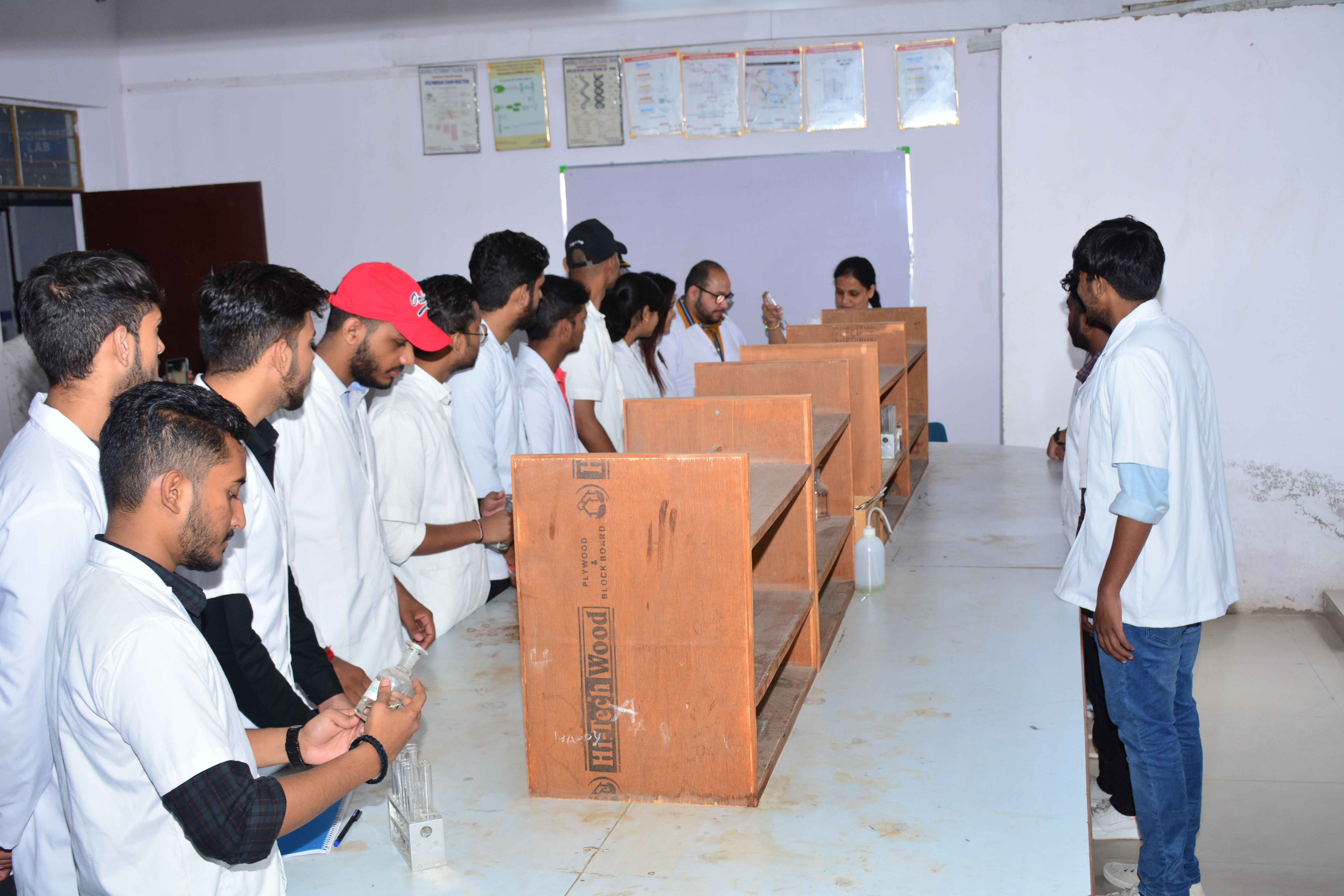
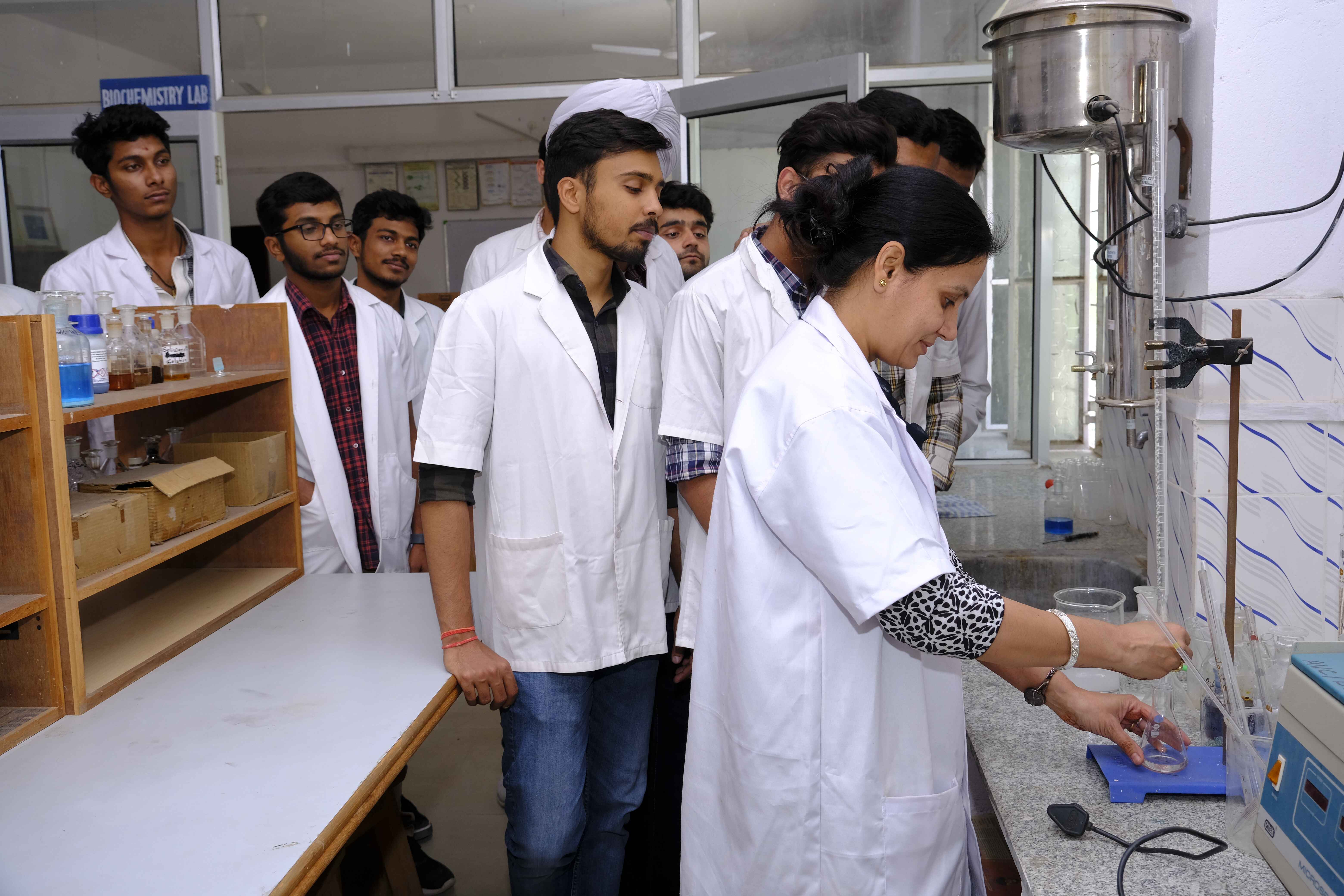
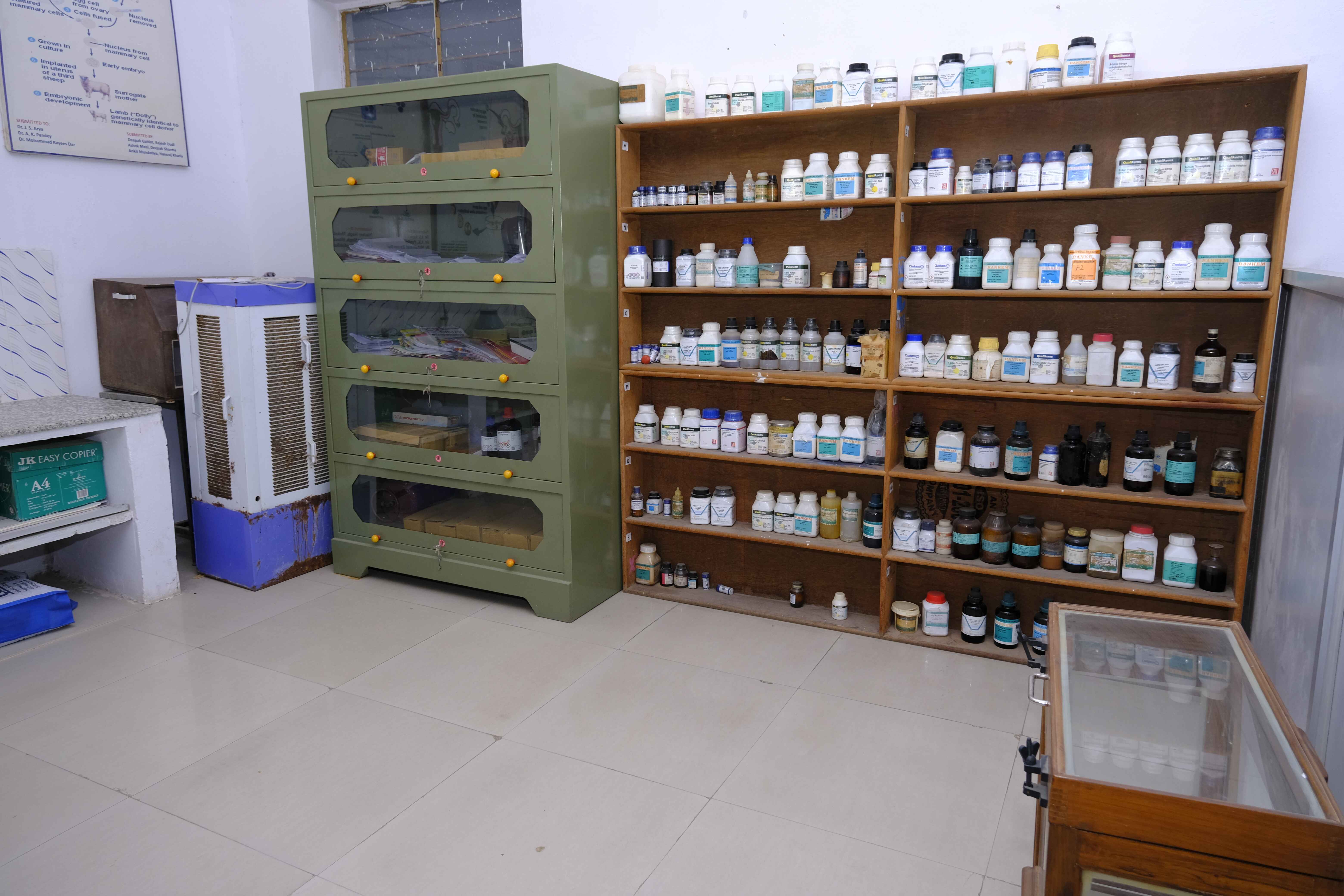
Department of Veterinary Physiology and Biochemistry: This department offers courses in physiology, biochemistry and biotechnology for understanding of the physiological, biochemical and molecular mechanisms involved in cellular functioning of various tissues, organs or body systems which form the basis of understanding mechanisms of actions of drugs, pathogenesis of diseases process, immunological processes, reproductive and endocrine disorders etc. involved in healthy and sick animals. Emphasis is given on practical training biochemical analytical techniques for disease diagnosis.
The Department has the following sanctioned strength of Faculty:
Professor - 1
Associate Professor – 1
Assistant Professors – 3
S.No.
|
Name
|
Designation
|
Qualification
|
Service Period at AVC
|
Photo
|
Bio Data
|
|
01
|
Dr. Richa Sharma
|
Assistant Professor
|
B.V.Sc & AH, M.V.Sc and PhD
|
05.01.2024 to31.12.2025
|
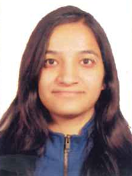 |
Bio Data |
|
02
|
Dr. Avani Singh
|
Assistant Professor
|
B.V.Sc & AH, M.V.Sc
|
21.10.2024 to till Continue
|
 |
Bio Data |
|
03
|
Dr. Rele Gauri Shrikant
|
Assistant Professor
|
B.V.Sc & AH, M.V.Sc
|
05.02.2025 to 03.06.2025
|
 |
|
|
04
|
Kumari Beenam
|
Assistant Professor
|
B.Sc. & , M.Sc.
|
19.02.2016 to till Continue
|
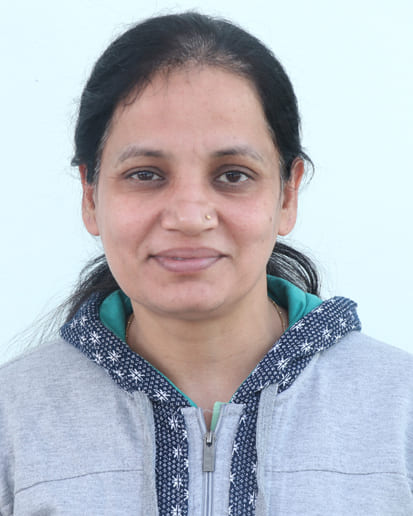 |
Biodata |
|
05
|
Dr. Preetesh
|
Assistant Professor
|
B.V.Sc & AH, M.V.Sc
|
Study Leave for PhD
|
 |
|
|
06
|
Dr Kiran Bala
|
Assistant Professor
|
B.V.Sc & AH, M.V.Sc
|
02.09.2025 to till Continue
|
|
Biodata |
|
07
|
Dr Navin B
|
Assistant Professor
|
B.V.Sc & AH, M.V.Sc
|
01.12.2025 to till Continue
|
|
Biodata |
| |
|
|
|
|
|
|
COURSES AND SYLLABI
THEORY
UNIT- 1 (BLOOD, CARDIOVASCULAR, NERVOUS AND MUSCULAR SYSTEMS)
Introduction to Blood; Properties of blood as a body fluid, metabolism and fate of R.B.C; Hemoglobin-chemical structure, synthesis, physiological functions, derivatives of hemoglobin;
Heart- morphological characteristic, systemic excitability conduction and transmission processes. Cardiac Cycle: Regulation of cardiac output; coronary circulation; properties of pulse; metabolism and energetic of working myocardial cell, extrinsic and intrinsic regulation; Electro Cardio Graph and its significance in Veterinary Sciences - Echocardiography. Haemorrhage haemostasis. Haemodynamics of circulation, circulatory mechanics, resistance to flow, vasoconstriction, nervous and circulating fluid volume controls of blood pressure, neurohormonal control of vascular smooth muscle. Circulatory controls- shock stresses, regional and fetal circulation. Capillary exchange, control of blood pressure. Adjustment of circulation during exercise. Muscle Physiology-basic muscle unit characteristic-electrical phenomenon in muscle cell - muscle action potential, excitation and propagation of impulse characteristics- latent period refractive ness, threshold level-all and none characteristics - contractile mechanism - excitation - contraction coupling-neuro-muscular transmission, types of muscle contraction, enomenon of fatigue, rigor mortis. Organization of nervous system- Mechanism of information processing, hierarchical control. Major function system- sensory, nsciousness, emotion, motor and visceral control and basic functional unit - neuron structure, type- functional characteristics of sub-units of neuron. Membrane potential -ionic basis of resting membrane potential (RMP) nerve action potential, excitation and propagation of impulse characteristics- latent period- refractive-ness, threshold level-all and none characteristics. Degeneration and regeneration of nerve fibre. Synaptic and junctional transmission. Functions of nervous system-reflexes-control of posture and movements, autonomic nervous system and visceral control. Neurotransmitter wakefulness, sleep cycle. Higher function of neurons ystem - learning, memory, electroencephalography. Sense organs and receptors physiology of special senses - Eye: functional morphology, nourishment and protection neural pathway, receptors- optics, ocular muscles and movements, photochemistry, Vision defects Ear: Physiology of hearing and common hearing impairment. Vestibule apparatus. Physiology of olfaction and taste
UNIT-2 (DIGESTIVE AND RESPIRATORY SYSTEMS)
Morphological characteristic of mono gastric and poly gastric digestive system. Prehension, rumination; defecation; vomition; regulation of secretory function of saliva, stomach, intestine, pancreas; bile secretion; hunger, appetite control, developmental aspects of digestion; luminous, membranous and microbial digestion in rumen and intestine; permeability characteristics of intestine, forces governing absorption, control intestinal transport of electrolyte and water, enzymatic digestion in monogastric and fermentative digestion in rumen, modification of toxic substances in rumen. Digestion in birds. Functional morphology of respiratory apparatus. Mechanics of breathing. Transport of blood gases, foetal and neonatal oxygen transport, dissociation curves, pressures, recoil tendency, elasticity, surfactants, pleural liquid, compliance, exchanges of gases in lungs and tissues, neural and chemical regulation of breathing, diffusion, perfusion, hypoxia .Frictional resistance to air flow, airways smooth muscle contraction, respiratory muscle work, panting, adaptation of respiration during muscle exercise, high altitude hypoxia, Non-respiratory lung functions. Respiration in birds.
UNIT-3 ( EXCRETORY AND ENDOCRINE SYSTEMS)
Kidney- Functional morphology of nephrons, factors determining filtration pressure, determination of glomerular filtration rate (GFR) and renal plasma flow – Re-absorption mechanisms for glucose, protein, amino acids, electrolytes; ammonium mechanism, glomerulo-tubular balance, methods of studying renal functions; urine concentration; micturition, uremia. Fluid, water balance, fluid therapy, dehydration, water concentration mechanisms. Acid base balance and H+ regulation, correction and evolution of imbalances, total osmotic pressure. Formation and excretion of urine of Birds. Cerebrospinal fluid, synovial fluids - composition, formation and flow; Joints. Regulation of bone metabolism and homeostasis.Hormone cell interaction, sub-cellular mechanisms-metabolism of hormones- ethods of study of endocrine system; Receptors- mechanism of regulation; Chemistry of hypothalamo- hypophyseal hormones, target organ, pineal, thyroid, thymus, pancreas, adrenal, prostaglandins, hormones of calcium metabolism, disorders, rennin-angiotensin system, atrial natriuretic factors, erythropoietin, GI hormones, pheromones.
UNIT-4 (REPRODUCTION, LACTATION, GROWTH AND ENVIRONMENTAL PHYSIOLOGY)
Genetic and endocrine control of gonadal development, modification of gonadotrophin release, ovarian functions, follicular development, dynamics, endocrine and receptor profiles, sexual receptivity, ovarian cycle, post-partum ovarian activity, ovum transport, capacitation, fertilization, reproductive cycles in farm animals- hormones present in the biological fluids during pregnancy and their uses for the diagnosis of pregnancy- maternal foetal placental participation in pregnancy and parturition, immunology of gestation, preparturient endocrine status. Spermatogenic cycle and wave- function of sertoli cell-leydig cell-semen - composition- valuation; Testosterone -function and regulation - cryptorchidism. Puberty - photoperiod - uses of androgens, progestogens, estrogens. Functional and metabolic organization of mammary glands - structure and development; effect of estrogens and progesterone; hormonal control of mammary growth; lactogenesis and galctogenesis; biosynthesis of milk constituentssecretion of milk, and metabolism, prolactin and lactation cycle. Biochemical and genetic determinants of growth, regulation of growth, metabolic and hormone interactions, factors affecting efficiency of growth and production in ruminants and single stomach animals. Growth in meat producing animals and birds, growth curves. Recombinant gene transfer technologies for growth manipulation- advantages and limitations. Protein deposition in animals and poultry. Heat balance, heat tolerance, hypothermia, hyperthermia, thermo-regulation in farm animals, role of skin, responses of animals to heat and cold, fever, body temperature and hibernation. Temperature regulation in birds.
Climatology- various parameters and their importance. Effect of different environmental variables like temperature, humidity, light, radiation, altitude on animal performance. Acclimation, acclimatization - general adaptive syndrome. Clinical aspects of endocrine - reproductive functions, circadian rhythm. Neurophysiology of behaviours, types of behaviour, communication, Learning and memory behavioural plasticity.
PRACTICAL
UNIT- 1 (BLOOD, CARDIOVASCULAR, NERVOUS AND MUSCULAR SYSTEMS)
Collection of blood samples - Separation of serum and plasma - Preservation of de-fribrinated blood - enumeration of erythrocytes, leucocytes - differential leucocytic count - platelet count - estimation of hemoglobin - haematocrit - erythrocyte sedimentation rate - packed cell volume - coagulation time- bleeding time -Erythrocyte fragility and viscosity - blood grouping - recording of ECG - measurement of arterial blood pressure (Sphygmomanometry). Simulation experiments on Nerve- muscle and heart physiology.
UNIT-2 (DIGESTIVE AND RESPIRATORY SYSTEMS)
Counting of rumen motility, estimation of volatile fatty acids and ammonia nitrogen in rumen liquor. Bacterial and protozoal count. In-vitro action of proteolytic enzymes- Amylase, pepsin and trypsin. Recording of respiration, spirometry. Recording of volume and capacities in different physiological states including determination of vital capacities.
UNIT-3 ( EXCRETORY AND ENDOCRINE SYSTEMS)
Urine analysis-physiological constituents, pathological determinates, determination of Glomerular Filteration Rate. Titerable acidity, determination of inorganic phosphorus, urine ammonia nitrogen and creatinine in urine. Recording of rumenorintestinal movements (Demonstration) and Bio assay for tropic hormone. Demonstration of hormone estimation.
UNIT-4 (REPRODUCTION, LACTATION, GROWTH AND ENVIRONMENTAL PHYSIOLOGY)
Oestrus and phases of oestrous cycle in animals (vaginal mucus). Behavioural signs of oestrus. Sperm motility, sperm concentration -live and dead - abnormal sperm count. Measurement of growth in various species. Measuring surface area of animals. Health parameters of animals- body temperature, pulse, respiration and heart rate. Measurement of animal environmental conditions. Behaviour of animals- mating behavior, feeding behaviour (liveorvideo graphicorcomputer simulated demonstration).
ANNUAL EXAMINATION
PAPERS U N I T S MAXIMUM MARKS WEIGHTAGE
THEORY
Paper-I 1 a n d 2 1 0 0 20
Paper-II 3 a n d 4 100 20
PRACTICAL
Paper-I 1 a n d 2 60 20
Paper-II 3 a n d 4 60 20
VETERINARY BIOCHEMISTRY Credit Hours: 2+1
THEORY
UNIT-1 (GENERAL VETERINARY BIOCHEMISTRY)
Scope and Importance of Biochemistry. Structure of Biological Membranes and Transport across Membranes. Donnan Membrane Equilibrium. Dissociation of Acids, pH, Buffer Systems, Henderson-Hasselbalch Equation. Biochemistry of Carbohydrates: Biological Significance of Important Monosaccharides(Ribose, Glucose, Fructose, Galactose, Mannose and Amino Sugars), Disaccharides (Maltose, Isomaltose, Lactose, Sucrose and Cellobiose), Polysaccharides, (Starch, Dextrins, Dextrans, Glycogen, Cellulose, Inulin, Chitin), and Mucopolysaccharides Including Bacterial Cell Wall Polysaccharides. Biochemistry of lipids: Properties and biological significance of simple, compound and derived lipids and lipoproteins. Fat indices. Structure and functions of prostaglandins. Biochemistry of proteins: Classification, Structure, Properties - Biological significance of proteins. Amino acids: Structure and classification. Physical and chemical properties of amino acids - amphoteric nature, optical activity, and peptide bond formation. Biochemistry of nucleic acids: Chemistry of purines, pyrimidines, nucleosides and nucleotides. Biological significance of nucleosides and nucleotides. Structures and functions of deoxyribonucleic acid (DNA) and a typical ribonucleic acid (RNA).
UNIT-2 (INTERMEDIARY METABOLISM)
Enzymes: Definition and classification. Coenzymes, cofactors and iso-enzymes. Properties: Protein nature, enzyme substrate complex formation, modern concept of the active center of enzyme. Specificity of enzyme action: Substrate specificity, group specificity, stereo or optical specificity. Factors influencing enzyme action: Effects of temperature, pH, concentration of substrate and enzyme. Enzyme units: International Units, katal, turnover number and specific activity. Enzyme inhibition: Competitive, non-competitive, uncompetitive inhibition and suicidal inhibition. Allosteric enzymes. Biological oxidation: Enzymes and coenzymes involved in oxidation and reduction. Respiratory chain or electron transport chain, oxidative phosphorylation, inhibitors, uncouplers and other factors influencing electron transport chain. Carbohydrate metabolism: Glycolysis, Kreb's cycle, HMP shunt, gluconeogenesis, Cori cycle, glycogenesis, glycogenolysis, Bioenergetics of carbohydrate metabolism. Lipid metabolism: Beta oxidation of fatty acids, ketone body formation, biosynthesis of fatty acids. Bioenergetics of lipid metabolism.
Protein metabolism: Biosynthesis and Degradation. Deamination, transamination and decarboxylation of amino acids. Ammonia transport and urea cycle. Nucleic acid metabolism: Metabolism of purines and pyrimidines. DNA and RNA biosynthesis and regulation. Regulation and Integration of metabolism.
UNIT- 3 (VETERINARY ANALYTICAL BIOCHEMISTRY)
Disorders of Carbohydrate Metabolism: Diabetes mellitus, Ketosis, Bovine Ketosis, Pregnancy toxemia, hypoglycaemia in baby pigs, hyperinsulinism in Dogs. Hormonal control of carbohydrate metabolism and regulation of blood sugar. Biochemical tests for the detection of disturbance in carbohydrate metabolism. Plasma Proteins and clinical significance, Proteins and Dysproteinemias,. Acute Phase proteins. Lipid Profile in disease diagnosis. Clinical Enzymology -
Diagnostic importance of non-functional plasma enzymes and Isoenzymes, Liver function tests - Classification - Biochemical tests for differential diagnosis. Biochemical tests of renal function - Urine analysis - Role of BUN, Uric acid and Creatinine in diagnosis. Disturbance in acid base balance and its diagnosis. Biochemistry of digestive disorders. Biochemistry of oxidative stress and shock. Biochemical basis of fluid therapy. Detoxification in the body: Metabolism of xenobiotics, General reactions for biotransformation of different groups of substances, Cytochrome p450 system of enzymes.
PRACTICAL
UNIT-1 (GENERAL VETERINARY BIOCHEMISTRY)
Concentration of solutions and system International (S.I.) Units; Preparationor standardization of acids and alkalies; reparation of Buffers; Titration curve of acid versus base; Qualitative test for carbohydrates and identification of unknown carbohydrates; Determination of acid number of an oil; Color and precipitation reactions of proteins; Estimation of amino acids (Sorensen’s Method).
UNIT-2 (INTERMEDIARY METABOLISM)
Effect of temperature and pH on enzyme activity; Estimation of blood or plasma Glucose, Protein, Inorganic phosphate, Calcium, Magnesium; Estimation of ascorbic acid by Dichlorophenolindophenol (DCPIP) method; Estimation of milk lactose by Benedicts quantative method; Estimation of sodium and potassium by flame photometer; Paper or thin later Chromatography of amino acids; Estimation of vitamin A by colorimetry.
UNIT-3 (VETERINARY ANALYTICAL BIOCHEMISTRY)
Detection of Pathological Constituents in Urine; Assays of ALT and AST in Serum; Acute phase proteins (AorG Ratio); Estimation of total serum cholesterol, Blood Urea Nitrogen, creatinine, serum billirubin (Direct, Indirect and Total). Principles of various diagnostic tests, normal and abnormal values in different species, differential diagnosis, correlating with diseases and rationale of arriving at the conclusion need to be rediscussed in detail during Final Profesional in the course.
VETERINARY CLINICAL PRACTICES-II, Diagnostic Laboratory Section
ANNUAL EXAMINATION
PAPERS UNITS MAXIMUM MARKS WEIGHTAGE
THEORY
Paper-I 1 and 3 100 20
Paper-II 2 100 20
PRACTICAL
Paper-I 1and 3 60 20
Paper - II 2 60 20
INTERNAL ASSESSMENT 20